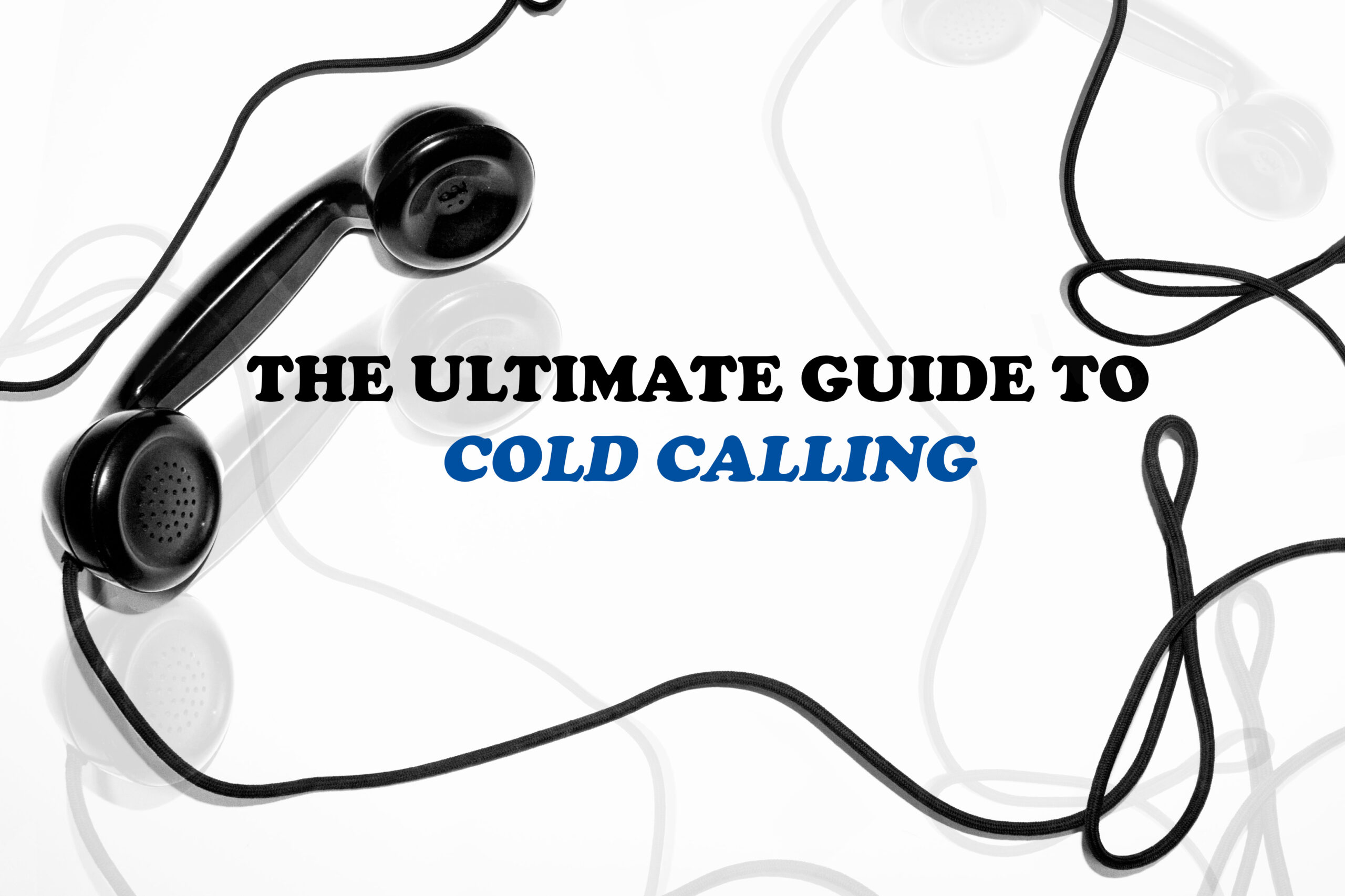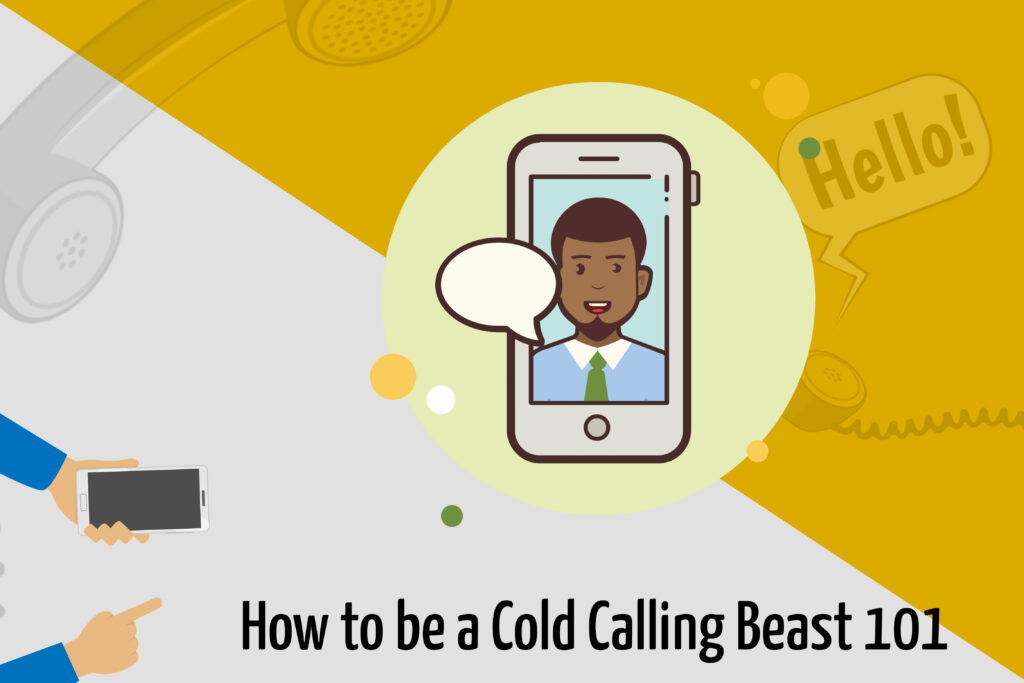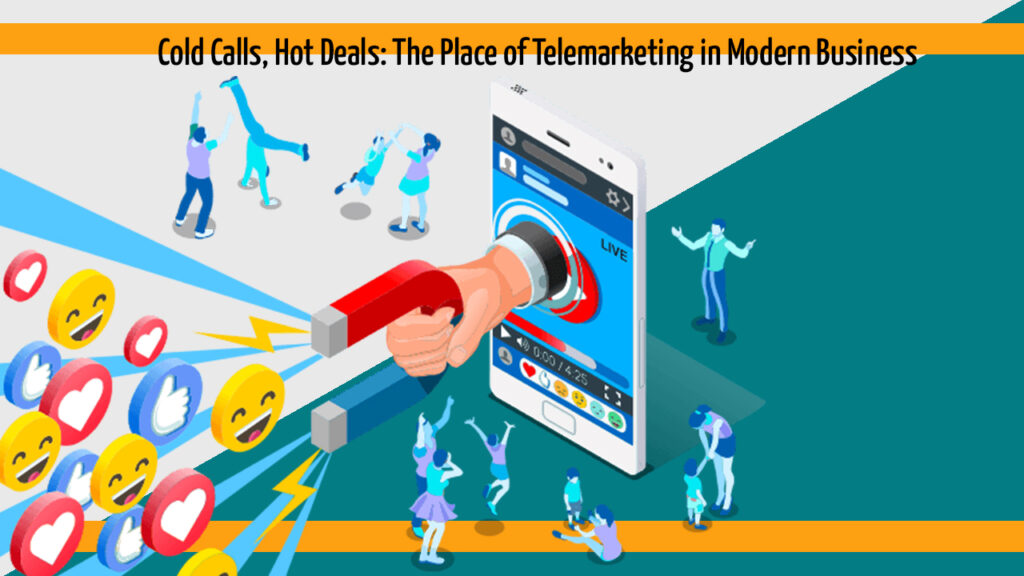02 Feb

I. What Will I Learn from This Guide?
There’s one main ingredient that makes a successful sale – taking action.
As experts emphasize, businesses need to take constant action in the sales field to achieve satisfactory results. One of the primary strategies that companies need to consider in order to succeed in the sales cycle is cold calling.
Among many different methods to approach your potential target audience and turn them into loyal customers, cold calling remains one of the most reliable ones. According to Jeb Blount, author of the guide for salespeople Fanatical Prospecting, the contact rate of cold calling varies from 15% to 80%, which is quite more favorable than the results of cold email campaigns.
Reaching out to strangers on the phone and promoting a product or service in a convincing manner can be a challenging task. However, with the tips and recommendations offered in this guide, every company will up its sales game.
Let’s get started!
II. Introduction to Cold Calling
In its essence, a cold call encapsulates the concept of calling a potential business-to-business client you have never reached out to in the past. The aim of cold calling is simple – to assess the need for your product or service among interested clients and schedule further collaboration in case of positive feedback.
Cold calling is a highly trusted sales method for countless businesses, and for an obvious reason – it opens the door to new business connections, be it customers or other ventures, thus striking new business deals and bringing significant profits to the company.
Businesses that overlook cold calling as a marketing strategy risk facing a lack of revenue that can seriously affect the ongoing maintenance of their business.
Advantages of Cold Calling: Why Do We Cold Call?
The benefits of cold calling inside the entrepreneurial world are endless. In a cold call, you can identify potential clients interested in your product or service, and learn more about your company’s target audience.
Cold calling allows you to get in touch with decision-makers who are part of companies with whom you will potentially collaborate. When done right, cold calling can allow you to take control over the entire business marketing strategy.
Although failed cold calls may seem frustrating – and no one’s immune to them – when it comes to business marketing, you either win or learn. That said, it is crucial to acknowledge negative feedback from your target audience and use it as a learning curve in improving both your marketing techniques – and the quality of your product or service.
And, unlike paid social media advertising or cold email campaigns, cold calling humanizes the marketing process and gets a brand closer to potential customers. By reaching out to decision-makers and scheduling pitch meetings, you put yourself directly in the active marketing process and so, increase your overall company revenue.
The Flip Side: Cold Calling’s Bad Reputation
On the other hand, many business makers resent the concept of cold calling.
The reason for this is simple – the potential client included in the cold calling concept doesn’t expect your incoming call and has no prior knowledge of your company, product, or service.
This is what makes attracting the listener’s attention a tough task, especially for beginners in the sales field. However, when you grasp the art of cold calling, you will become a much more insightful sales representative and can therefore engage with potential customers fruitfully.
The tricks and strategies in this guide serve to turn cold calling from a difficult chore for salespeople to an efficient method of promoting your products and services to clients.
Here are some handy tips to help sales representatives overcome the negative feedback that may come with cold calling – and build a satisfactory rapport with customers in turn.
III. Who Do You Cold Call? Qualifying for a Cold Call
Typically, qualifying for a cold call occurs before an initial cold call with a particular target takes place. In modern marketing strategies, lead qualification is a wholesome process to consider and involves not only sales reps, but the entire marketing team of a company.
When a sales department follows an inbound model, the marketing team selects realistic leads expected to be interested in their product or service. In this case, salespeople’s job is to determine the customer’s needs in detail – and meet them.
In outbound teams, a sales representative is often expected to find qualified leads as well.
The qualifying process usually involves two parts – pre-call qualifying and qualifying during the cold call. In the following sections, we will go through them in more detail and emphasize the points you should focus on.
Pre-call Qualifying
As a rule of thumb, it’s recommended to do a larger portion of the qualifying process even before the cold call starts. Adequate pre-call research will help you filter the right leads and save valuable time spent on futile cold calling.
Moreover, by learning more information about a viable lead, you can avoid trivial or consecutive questions that can bore clients on the phone.
What matters the most in lead qualification is assessing the potential client’s buyer persona. Some of the most important information to look out for include the lead’s job position, their responsibilities, and the number of employees in the company where the lead works, to name a few.
You shouldn’t wait for the actual phone conversation to find out these details. Rather, answer the questions yourself – with the help of Google and LinkedIn.
Furthermore, it is wise to check for high-value lead actions, -typically found on the company’s website – that imply their interest in the particular product or service. When it comes to inbound plans, the marketing team is supposed to take both the buyer’s persona and the website behavior into consideration as their primary factors in filtering cold calling leads.
In other words, an inbound marketing team will use various assessment programs to decide if a certain lead is a part of a company with a convenient number of employees and whether the company is in a relevant business field. The team can also gain insights into the lead’s website behavior as well as their interest in talking to a designated professional concerning the promoted product or service.
In addition, the marketing team will be in charge of the overall coordination process, and ought to discuss all defined high-value data points with respective sales representatives.
Finally, the cold calling team should be able to accumulate information that puts the lead in your target audience as a SQL (Sales Qualified Lead) and identify their place within the buying process – as a decision-maker or an influencer.
Qualifying During Cold Calling
Before cold calling takes place, every company ought to set its own SQL definition and expectations, in alignment with its business management. This makes it easier for sales representatives to focus on discovering their prospects’ needs and finding viable solutions for meeting these needs.
The more problems you discuss with a potential customer during the initial cold call, the higher the chance of making things work with that particular prospect.
As per numbers, over 80% of detailed and helpful cold calls result in a closed sale – which is exactly what you are aiming for!
The key for more successfully closed sales is to put yourself in the position of a customer advocate – rather than a salesperson. Helping your potential clients and gaining their trust should be a top priority, and it can only be achieved by walking a mile in your prospect’s shoes. Even in cases when the SQLs are provided for you along with detailed data, it’s wise to further your research on them before you get on the phone. Salespeople need to double-check the accuracy of the information about targeted leads. Consider learning the real meaning of their job title through their LinkedIn account and visiting their company website.
IV. Most Effective Cold Calling Methods – How to Be a Cold Calling Beast 101
So, how do you master the art of cold calling and make sure your company gets the best out of this marketing strategy?

Below, we will guide you through their main characteristics, similarities, and differences to help you decide which one works best for your company.
The marketing industry is familiar with various methods for qualifying cold calling leads.
BANT (Budget, Authority, Need, Timeline)
BANT is the oldest known method of qualifying on a cold call we will cover in this section. It was first introduced by IBM salespeople and it strictly focuses on several main points.
First of all, sales representatives who follow the BANT method outline their qualifying questions in the direction of determining a budget. Next, it is essential to find out the company’s exact needs, the ideal sales timeline, and the position of the prospect you are talking to (decision-maker or not).
In general, this method is deemed quite outdated as it doesn’t involve all necessary lead nurturing points that a marketing team should take into consideration.
CHAMP (Challenges, Authority, Money, Prioritization)
To put it simply, CHAMP is an upgraded and modernized version of the BANT method. It is characterized as more client-centric because it teaches marketing teams to focus on the lead’s pain points as their top priority.
Moreover, while the BANT method makes sales representatives focus only on decision-makers and quit on leads in the position of an influencer, the CHAMP method is all about continuing the call and trying to get in touch with the decision-maker of the company.
GPCTBA/C&I (Goals, Plans, Challenges, Timeline, Budget, Authority/Consequences & Implications)
While the long acronym of this method might put you off at first glance, GPCTBA/C&I is the most up-to-date cold calling concept that focuses on the customer’s experience.
With this method, salespeople assume that most clients have already conducted a fair amount of research on the particular product or service before the phone call. This puts the sales rep in the position of an advisor that should guide the lead through the benefits of becoming a client.
GPCTBA/C&I is the preferred method in the modern marketing world because it teaches salespeople to investigate and grasp the lead’s plans and objectives before tackling them directly on the phone. Furthermore, the salesperson is expected to discuss the possible opportunities or consequences that the product or service in question can offer.
How to Choose Your Method?
Now that you weighed the advantages and setbacks of these methods, it is time to pick the ideal one that fits your business model and objectives.
For example, the BANT method is known to work best for businesses that promote a one-time product or service, because it gives you a fast guide through and lets you go on the next sale. On the other hand, CHAMP and GPCTBA/C&I are more favorable choices for companies that prioritize customer retention.
V. Cold Calling Scripts: Are They Necessary?
One of the primary dilemmas about employing a good cold calling technique is the involvement of scripts. While some marketing experts consider cold calling scripts necessary, others emphasize them as time-consuming and unnatural. Then again, there is a mid-point option – to provide cold calling scripts for newbies, but let them use the script only as a guideline after a certain period.
A company can decide whether its sales representatives will use a script or not, but a well-outlined plan on cold calling is necessary for every business.
The first 30 seconds of a cold call are crucial for closing a deal. Sales representatives should use the opening lines to accurately present themselves, the company they represent, and the objective of the call. The salesperson is expected to tackle the areas of potential interest and expectations from the company as well.
Benefits of Cold Calling Scripts
There are several ways in which a company can benefit from its salespeople following cold calling scripts. The extensive data about clients that needs to be remembered is a simple reason for that.
Cold calling scripts create a notion of consistency in a company’s sales department that makes it easier for newly employed salespeople to fit in. By using scripts, a brand creates a steady voice in the field that prevents individual employees from possibly damaging its reputation on the market.
Another important benefit that scripts provide for salespeople is the decrease of stress. Having an outlined scenario about what needs to be explained and offered before starting the call can lift off the tension, especially for beginners in the sales field.
The consistency and coordination that come with using cold calling scripts result in the collective effectiveness of a company’s marketing team. When you find the ideal kind of script and distribute it to all employees, this will result in the substantial success of the whole team.
Finally, cold calling scripts make it easier for salespeople to rebut objections by customers. A good script considers the possibility of clients having objections to buying the specific product and prepares salespeople with responses that have been proven to work.
Disadvantages and Alternatives to Consider
As we already elaborated, there are many advantages of employing scripts in sales management. However, it is also important to take into account the possible setbacks from using scripts pointed out by marketing experts.
The main potential issue with cold calling scripts is their lack of flexibility. Many sales representatives are prone to following the script too closely. This results in an unnatural, robotic voice, and an overall strict flow of the conversation, which leaves no space for customization.
In order to surpass these issues and achieve spontaneity in your cold calls, modern companies prefer discussion frameworks instead of classical scripts. With this concept, the marketing team gets a guideline rather than a strict cold calling script, which makes salespeople sound more genuine and trustworthy on the phone.
Another disadvantage of classical cold calling scripts is that they don’t leave enough space for a natural, give-and-take exchange. Apart from gathering valuable information from the lead, you should also listen to them, prioritize their questions and demands, and respond to them accordingly – and in real-time.
Your role as a salesperson should focus more on finding out whether you should spend time pitching to the specific company, rather than plainly aiming to promote a certain product to the client. Closing a deal is just the first step towards the true objective – setting up a meeting, and your responses during the cold call should lead to it.
VI. Mindset is Might – Put Yourself in the Right One!
A proper mindset is a key ingredient in the formula of successful cold calling. Merely closing a deal and gaining profit isn’t enough – you need to first help your customer and enhance their life by solving their questions and dilemmas.

A crucial part of putting yourself in the right mindset is believing in the quality of the product or service you’re promoting and the importance of them helping your customer. Your potential client can sense your lack of genuine enthusiasm, so choose authentic service instead of reservations.
It is also common for salespeople to assume that their calls are unwanted or that they are interrupting their potential customers’ day. To tell you the truth – as a salesperson, you will get in touch with annoyed clients who perceive your call as a nuisance.
However, on the bright side – your call may be a positive interruption and a break in someone’s hectic day-to-day routine.
Be Ready to Embrace Rejection – Constantly
Rejection is an inevitable part of being a salesperson, especially during cold calling. Statistics have shown that, on average, most cold calls last around 80 seconds, and less than 10% of them go for longer than 2 minutes.
In order to overcome your fear of rejection, it is vital to ask for feedback. Instead of immediately giving up on the phone call, show appreciation for the customer’s honesty and ask them about the reasons why they think your product or service won’t work for them.
Ultimately, practice makes perfect. With every new cold call, you get more confidence which will lead the quality of your responses to drastically increase.
Outline Your Next Steps
As far as successful cold calls are concerned, you aren’t supposed to immediately close the sale based on that sole call. Chances are, you aren’t speaking to the decision-maker. Or, your potential client is not ready yet to make the decision.
If you are receiving a positive response from an interested and potential client during a cold call, it is wise to calculate your next steps ahead of time. After all, being a salesperson means that it is your duty to guide the lead through the process and leave them with as little work as possible, so they don’t lose interest.

VII. Cold Calling Tricks and Strategies: What Do Experts Say?
- Using a familiar area code increases the chances you have for an answered call as opposed to typical 1-800 numbers.
- Referrals and recommended shared contacts are of great help.
- Be aware of the potential impact that your product or service may have on the targeted organization.
- A fair talk-to-listen ratio and open-ended questions are essential for a successful, engaging cold call.
VIII. Cold Calls, Hot Deals: The Place of Telemarketing in Modern Business
While cold calling has its common setbacks and notoriousness, it’s an inevitable part of every company’s marketing campaign.
With the right strategy at hand, cold calling can bring you valuable new business partnerships. When marketing teams manage to master their craft, the possibilities for business profits and market exposure are endless.
Don’t hesitate to rely on this revenue technique – with the aforementioned tips your cold calls will sound anything but cold.

XIX. Cold Calling: A Checklist Before You Go
Finally, let’s briefly go through the main points you need to consider for your cold calling technique:
- Proper lead qualification (before and during the cold call)
- Choosing an effective cold calling method (BANT, CHAMP, or GPCTBA/C&I)
- Weighing in the necessity of a cold call script and considering the alternatives
- Putting yourself in a confident, trustworthy mindset
- Planning your next steps and creating your approach vector
Check and check! And that’s a wrap on cold calling and the ways it can empower your business in today’s climate. Thank you for reading – we hope we shed some light that will make cold calling a much easier – and more profitable – part of your marketing campaign.
Until next time!